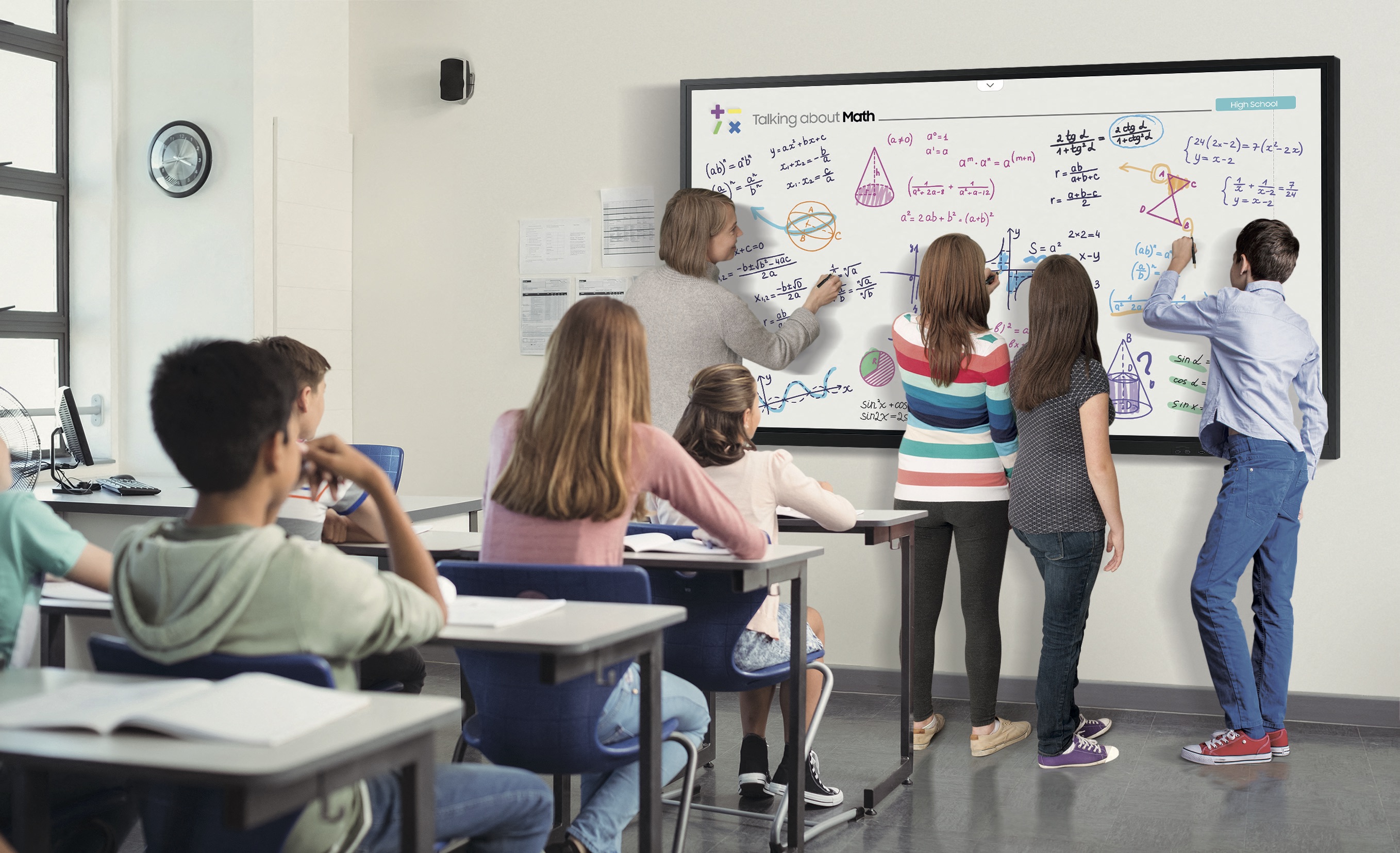Best Practices for Interactive Displays in the Classroom
Using interactive displays in the classroom is an opportunity to make the most of time with students and empower them with simple strategies.

Using interactive displays in the classroom is an opportunity to make the most of time with students and empower them with simple strategies.
During a recent Tech & Learning webinar hosted by Dr. Kecia Ray, education experts discussed best practices, experiential learning tips, special processes, and technology insights needed to maximize display use and improve engagement.
“Remember we’re preparing our students for their future, not preparing them by our past,” said Micah Shippee, a middle school teacher for 22 years and now Director of Education Technology Consulting and Solutions for Samsung, adding that an interactive display really amplifies our teachers, which are still the best instruction resource in the classroom. “Good instruction is based on modeling. And so when we're using interactive panels, I think it's really powerful to use the same tools that students are using and to demonstrate for them how to use those tools in a more productive manner.”
To watch the full webinar on demand, click here.
Key Takeaways
Forward looking, figuratively. "Interactive displays let us get the learning away from the front of the room and into the hands of the students," said Matt Miller, author, former educator, and founder of Ditch That Textbook. "Moving the learning away from the front of the room benefits the students and learning improves."
"We cannot be locked to the front of the classroom, that sage on the stage," said Shippee, adding that innovation requires a culture shift. "Innovation could be becoming more of a guide on the side, and using these technologies to allow students to engage with the class instruction." To support that, district administrators need to look at full packages when considering interactive technology solutions, including professional development.
Amplification, not substitution. "Technology is not a silver bullet that will fix all problems," said Miller. "It's the way we use it to improve students' lives that creates engagement."
Tools and ideas to transform education. Sign up below.
“Remember, tech is an amplifier of instruction, not a substitute,” said Shippee.
Along those lines, educators should also remember that professional development is a continuum, and that learning never ends. “It’s not too late!” said Gloria Marchus, an edtech consultant for Samsung. “If there’s a tool or platform you didn’t get training on learning to use during the pandemic, you can still go back and get training.”
Marchus also said that teachers learn similar to the way that students do, so when it comes to PD for technology, presenters should be engaging, create hands-on learning opportunities, and most importantly, be transparent. “Because not only are you rolling out, ‘Here's this idea here's this tool, here's the strategy,’ but they need to understand the why. It's much harder to say ‘Hey, you really need to incorporate this in your room,’ if they can't see the purpose behind it.”
Mistakes welcome. When it came to learning tech, Shippee said he often tried it right in front of his students so they could see him make mistakes as he learned. “I failed right in front of them,” he said. “And then I successfully leveraged that same technology right in front of them. It wasn't ‘This isn't working, put your heads down while I figure it out.’ It was watching an adult persevere, seeing some stick-to-itiveness that sometimes works out and sometimes doesn't. It allowed me to be vulnerable in front of my students and for us to be real with each other, and the relationship level just boosted through the roof. And technology was the catalyst for that.”
Such a process is closer to how students learn on their own outside of class in the real world and can be a model, said Miller. “For example, when a student gets a brand new video game, do they get out the instruction manual and read it front to back before they start playing it, to make sure that they know all of the things that they need? No, absolutely not! They jump in, and they start trying to figure it out, and you know they die on the first level, and then they die again, and then they finally figure it out, and they can get to the next level.”
The learning experience that we design for students needs to have an appropriate level of challenge to it, said Shippee. And then we have to provide the proper tools, such as interactive displays, for students to collaborate and solve these challenges.
Advice for the year ahead. Each of the presenters was asked by Ray for one piece of advice to educators as they begin the new school year.
“You are probably doing better than you think,” said Marchus, in regard to using new technology and teaching in general. “I've had a lot of experiences when you end a lesson, a day, or a conversation, and you’re kicking yourself, and then the next day someone will come up, and they'll say ‘Thanks.’”
“Change is upon us, so we have to embrace it,” said Shippee. “Letting our students see us try something new and fail is useful.”
Finally, Miller suggested that educators remember to take care of themselves. “Teaching is hard work,” he said. “So many teachers are burned out or leaving the profession, and by golly, we need you!”
Ray Bendici is the Managing Editor of Tech & Learning and Tech & Learning University. He is an award-winning journalist/editor, with more than 20 years of experience, including a specific focus on education.
